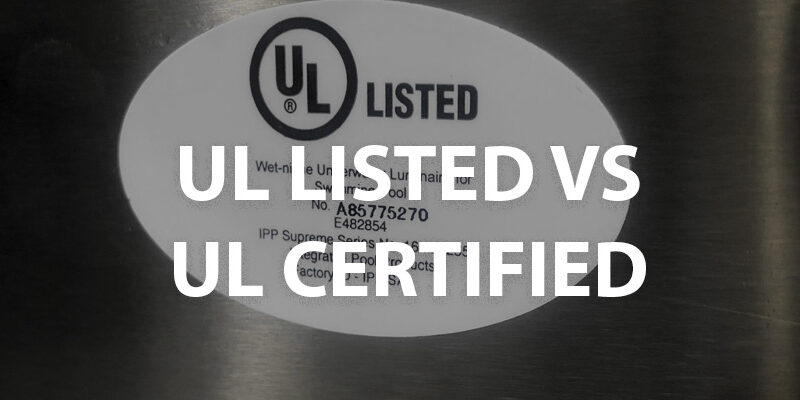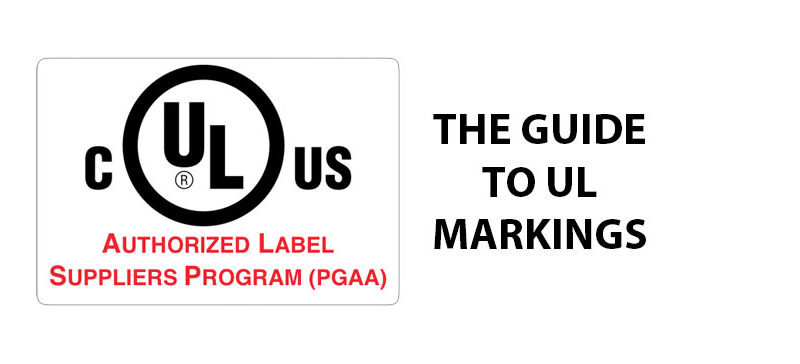If you’re developing a product, especially one with electrical components, you’re probably wondering what the difference between UL Listed vs UL Certified is. You probably see UL Listed and UL Certified marks on a variety of consumer products without a thought.
But what’s the difference between UL Listed and UL Certified? What does UL Recognized mean? And when are you required to seek UL certification? Read on to learn everything you need to know about UL Listed vs UL Certified products.
What Does UL Stand for?
UL stands for Underwriters Laboratories. Recently, however, the company rebranded and is now known only as UL. UL is a global standards company that develops safety standards for a variety of consumer goods, especially those with electrical parts. The company was founded in 1894 by an electrical inspector named William Henry Merrill Jr. With the increase of electricity used in homes, Merrill noticed greater incidences of fire loss. He opened his first lab to study fire and electrical safety and develop safety standards. Since then, UL has become a global organization with 64 laboratories, working with customers from over a hundred countries.
Today, UL publishes more than just electrical safety standards, also focuses on water quality, food safety, hazardous materials, performance testing, sustainability, as well as safety and compliance education. UL has a dedicated research division that is constantly researching safe practices for a variety of products and materials. In fact, UL is one of a few standards labs in the United States approved by OSHA to perform safety testing. Third-party labs like UL play an important part in keeping both consumers and employees safe.
What is UL Listed?
A product that is UL Listed is one that has been tested and found to have met strict standards for safety and sustainability. These standards might include fire and flame resistance, functionality, and potential electrical hazards. After the products are tested and found to function well and comply with standards, they are then certified to be UL Listed. UL Listed products carry a UL Listed mark. Consumers look for this mark to ensure they are purchasing a safe product.
UL tests for a variety of things, such as if the wire sizes are correct, the product can handle the amount of current claimed, as well as whether the product is durable and constructed correctly.
Some examples of products that might receive a UL Listed certification include:
- Machinery
- External power adapters
- IT equipment
- Audio equipment
- Smartphones and other mobile devices
- Slip-resistant floor materials
- Electrical lamps
- Household appliances
- Smoke alarms
- Residential fire safety sprinklers
- Tin-clad fire doors
- Furnaces
- Fuses
- Electrical panels
- CO2 alarms
UL Listed vs UL Recognized
Wondering what the difference between UL Listed and UL Recognized is? Basically, UL Listed is the certification for whole products that are meant to be used on their own. On the other hand, UL Recognized certification is for component parts meant to be incorporated into a larger whole.
Products that are UL Recognized still go through stringent testing; however, because UL Recognized certification is not for end-products, the testing isn’t as strict. While consumers regularly see the UL Listed mark on products, they generally will not come across the UL Recognized mark. This is because UL Recognized products are usually incorporated into UL Listed products by the time they reach consumers.
What Requires a UL Listing?
In the US, there are a number of third-party labs called Nationally Recognized Testing Laboratories (NRTLs). UL is the most well-known of the labs, but the others, such as ETL, follow the same safety standards. There is no law in the United States requiring products sold in the US to be certified by UL or another NRTL.
However, a variety of industries have safety codes that require the use of NRTL-certified products. For example, electrical code requires the use of listed products (whether UL Listed or by another NRTL) when available. Plus, most retailers won’t sell products that have not been UL Listed.
For this reason, most manufacturers of quality goods choose to seek approval by UL or another NRTL. In fact, having a UL Listed mark on your product gives you more credibility and can help with the marketing of your products. Some industries that benefit from UL Listed certification include:
- Aerospace
- Automotive
- Electrical wiring
- Power generation
- Oil and gas
- Consumer goods
What Requires UL Recognized?
Just as there are no laws requiring products to be UL Listed, there are no laws requiring components to be UL Recognized. However, achieving UL certification for component parts will add credibility to your products. Additionally, the standards set forth by UL help ensure the safety of those installing UL-recognized components.
Some examples of components that would receive a UL Recognized certification include:
- AC-DC internal power supply
- DC-DC internal power supply
- Pressure controllers
- Mass flow controllers
- Circuit boards
- Wires
- Transistors
- Diodes
- Display technology, such as LEDs and LCDs
When Is UL Certified Required?
To answer this, we first need to explain the difference between UL Listed vs UL Certified. You already know that UL Listed means the product meets the strict testing requirements set forth by UL. UL Certified is a broader term that includes UL Listed, UL Recognized, as well as UL Classified (which simply means that the product has been tested for one specific standard, such as sustainability). The mark used on your product will depend on which UL certification it has received.
Just as with UL Listed and UL Recognized, there are no laws requiring UL certification before a product can be sold in the US. However, receiving UL certification helps you ensure the quality of your product as well as its safety for consumers.
In addition to the three UL product certifications, UL also offers certification for facilities, personnel, processes, and systems. These certifications will help your company to comply with industry standards as well as improve best practices.
How to Get UL Certified
The process of getting UL certified can be long and expensive; however, it’s worth it in the end. UL certification helps you manufacture better products that will keep consumers and employees safe. So how do you get a product UL Listed?
- The first thing you’ll need to do is visit the UL website and create a myUL profile. Once registered, you can fill out the appropriate forms to begin the certification process.
- Next, you’ll send in a sample product to UL. You’ll want to make sure your product is safely packaged so that it doesn’t get damaged in transit.
- UL will then begin a series of tests on the product. If the product passes the tests, it will be certified. If it fails, you’ll need to rework the product and resubmit.
- Once the product passes the certification, UL will issue a certificate to the manufacturer of your product. At this point, you can label your products with the UL Listed or UL Recognized marks.
- Finally, UL will audit certified products regularly to ensure that they still comply with safety standards.
Key Takeaways: UL Listed vs UL Certified
- Underwriters Laboratories plays an important role in developing safety standards and certifying that products comply with those standards.
- UL Listed is for whole products, such as machinery or external power supplies.
- UL Recognized is for component parts, which will be installed as part of a larger
- UL Certified is a broader term that may indicate a component, product, system, process, personnel, or facility has passed the UL certification process.
- Getting UL certified can be an expensive process but increases safety for consumers and employees. Plus, it adds credibility to your product, which will help with sales in the long run.
If you need UL Listed or UL Recognized labels for your UL Certified products, Coast Label can help. The requirements for UL labels depend on the product that has been UL listed. Our team of UL experts will help you determine the appropriate materials and marks used for your UL labels. Click here to request a proposal.


